I've been modelling a VGA interface on the DE0 board. I have the following model for a 640x480 display which refreshes at 60Hz:
Main model:
LIBRARY IEEE;
USE IEEE.std_logic_1164.ALL;
USE IEEE.numeric_std.ALL;
ENTITY VGA is
PORT (clk : IN std_logic; -- demo had 2 bit vector
vga_hs, vga_vs : OUT std_logic;
vga_r, vga_g, vga_b : OUT std_logic_vector(3 DOWNTO 0));
END ENTITY VGA;
ARCHITECTURE A1 OF VGA IS
SIGNAL rst, clk25 : std_logic; -- rst only resets pixel clock
BEGIN
SYNC1 : ENTITY work.sync(A1)
PORT MAP (clk25, vga_hs, vga_vs, vga_r, vga_g, vga_b);
CLK_25 : ENTITY work.PLL(rtl)
PORT MAP (clk, rst, clk25);
END ARCHITECTURE A1;
Sync model:
LIBRARY IEEE;
USE IEEE.std_logic_1164.ALL;
USE IEEE.numeric_std.ALL;
ENTITY SYNC IS
PORT(
clk : IN std_logic;
h_sync, v_sync : OUT std_logic;
r, g, b : OUT std_logic_vector(3 DOWNTO 0)
);
END ENTITY SYNC;
ARCHITECTURE A1 OF SYNC IS
SIGNAL h_pos: integer RANGE 0 TO 800:=0;
SIGNAL v_pos : integer RANGE 0 TO 520:=0;
BEGIN
TIMING :PROCESS(clk) IS
BEGIN
IF rising_edge(clk) THEN
IF (h_pos = 480 or v_pos = 280) THEN -- middle of the screen is pic res/2 + (FP + sync + BP)
r <= (OTHERS => '1');
g <= (OTHERS => '1');
b <= (OTHERS => '1');
ELSE
r <= (OTHERS => '0');
g <= (OTHERS => '0');
b <= (OTHERS => '0');
END IF;
IF (h_pos < 800) THEN
h_pos <= h_pos + 1;
ELSE
h_pos <= 1;
IF (v_pos < 520) THEN
v_pos <= v_pos + 1;
ELSE
v_pos <= 1;
END IF;
END IF;
IF (h_pos > 16 and h_pos < 112 ) THEN -- H_POS between end of FP and the end of H_SYNC
h_sync <= '0'; -- H_SYNC needs to stay low during display
ELSE
h_sync <= '1';
END IF;
IF (v_pos > 8 and v_pos < 10 ) THEN --V_POS between end of FP and the end of V_SYNC
v_sync <= '0'; -- V_SYNC needs to stay low during display
ELSE
v_sync <= '1';
END IF;
IF ((h_pos > 0 and h_pos < 160) or (v_pos > 0 and v_pos < 40 )) THEN--During all of SYNC i.e FP + SYNC + BP colour signals stay low
r <= (OTHERS => '0');
g <= (OTHERS => '0');
b <= (OTHERS => '0');
END IF;
END IF;
END PROCESS TIMING;
END ARCHITECTURE A1;
----------Amendments made to model 09/02 13:42----------
The other direct instantiation is for PLL generated from Quartus II it seems to work fine.. thank you Mr Zilmer :). The model compiles fine. I load it into the DE0. Then connect this to a monitor and get nothing on the display. It should display a cross in the centre of the screen. The display I am using is a Samsung with 1920x1080. Would this stop my model from displaying anything? Or have I made a obvious mistake in my model. I have changed some of the standard timing values to fit a 60Hz refresh with 25Mz clk. Thanks D



